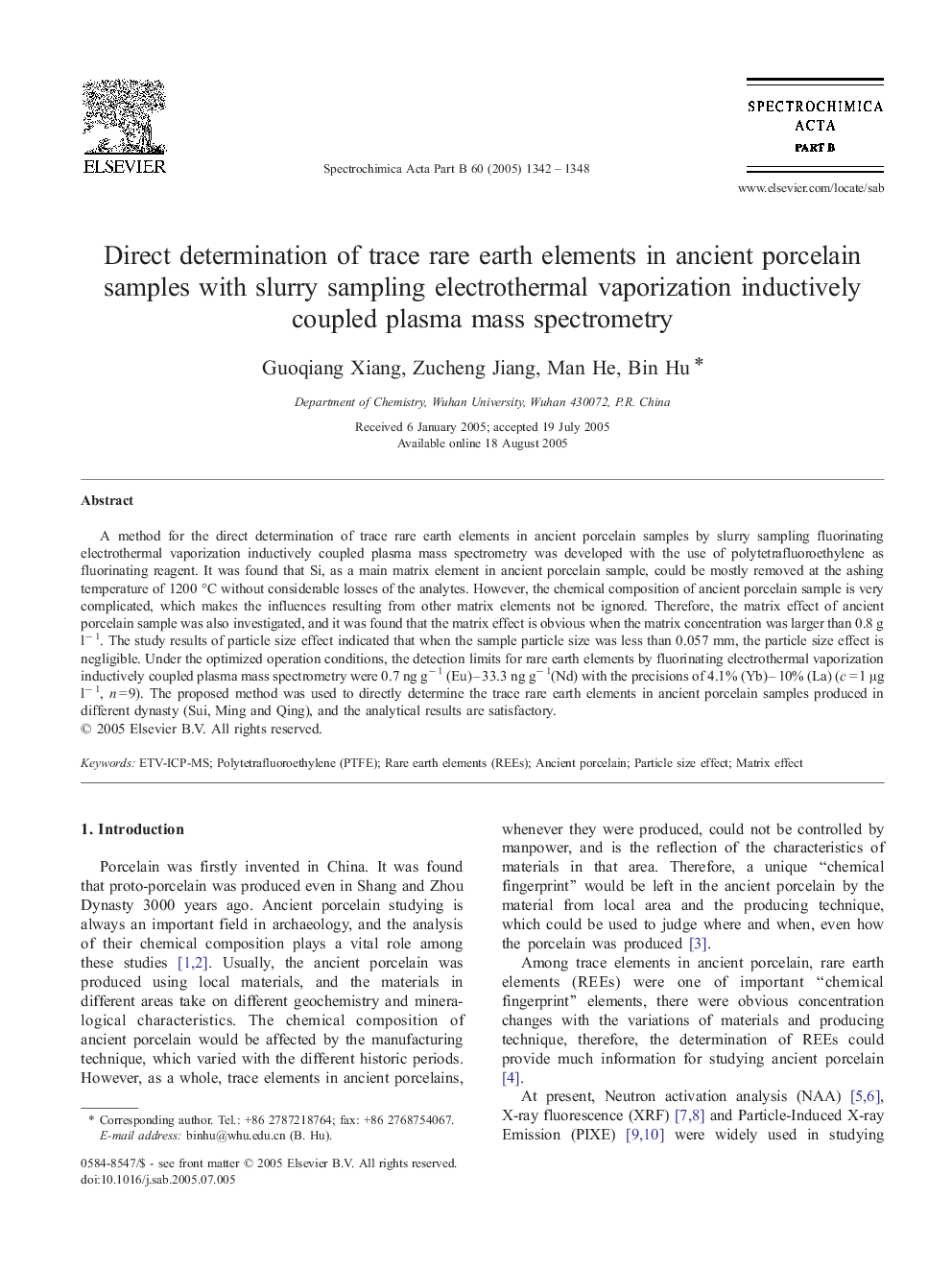| Article ID | Journal | Published Year | Pages | File Type |
|---|---|---|---|---|
| 9757216 | Spectrochimica Acta Part B: Atomic Spectroscopy | 2005 | 7 Pages |
Abstract
A method for the direct determination of trace rare earth elements in ancient porcelain samples by slurry sampling fluorinating electrothermal vaporization inductively coupled plasma mass spectrometry was developed with the use of polytetrafluoroethylene as fluorinating reagent. It was found that Si, as a main matrix element in ancient porcelain sample, could be mostly removed at the ashing temperature of 1200 °C without considerable losses of the analytes. However, the chemical composition of ancient porcelain sample is very complicated, which makes the influences resulting from other matrix elements not be ignored. Therefore, the matrix effect of ancient porcelain sample was also investigated, and it was found that the matrix effect is obvious when the matrix concentration was larger than 0.8 g lâ 1. The study results of particle size effect indicated that when the sample particle size was less than 0.057 mm, the particle size effect is negligible. Under the optimized operation conditions, the detection limits for rare earth elements by fluorinating electrothermal vaporization inductively coupled plasma mass spectrometry were 0.7 ng gâ 1 (Eu)-33.3 ng gâ 1(Nd) with the precisions of 4.1% (Yb)-10% (La) (c = 1 μg lâ 1, n = 9). The proposed method was used to directly determine the trace rare earth elements in ancient porcelain samples produced in different dynasty (Sui, Ming and Qing), and the analytical results are satisfactory.
Keywords
Related Topics
Physical Sciences and Engineering
Chemistry
Analytical Chemistry
Authors
Guoqiang Xiang, Zucheng Jiang, Man He, Bin Hu,
